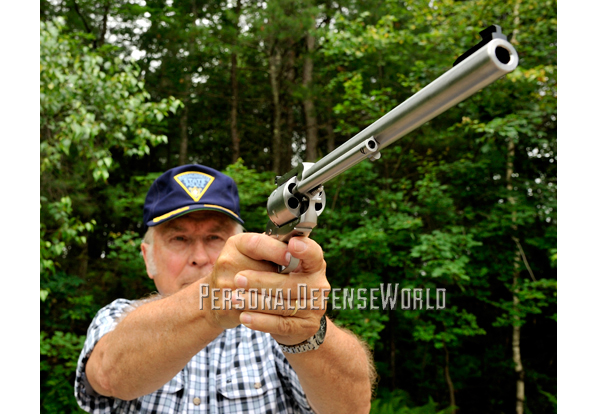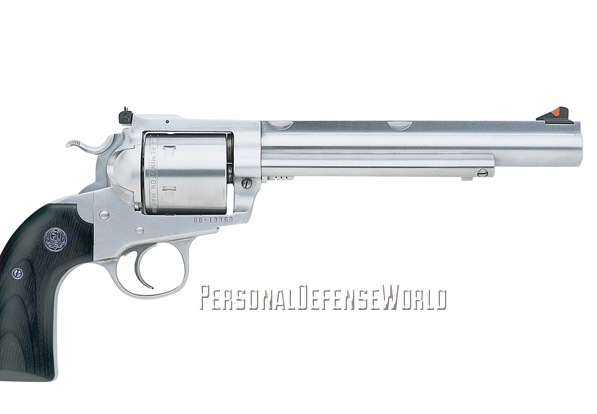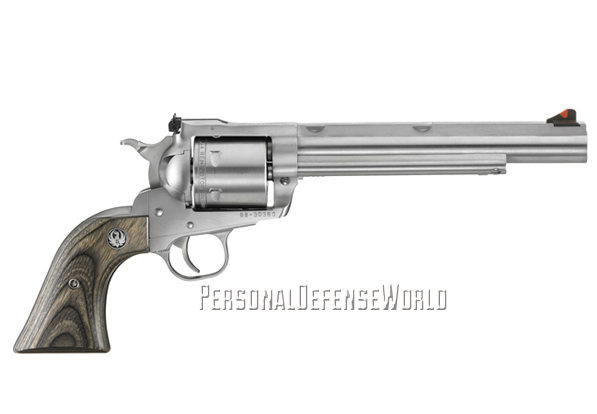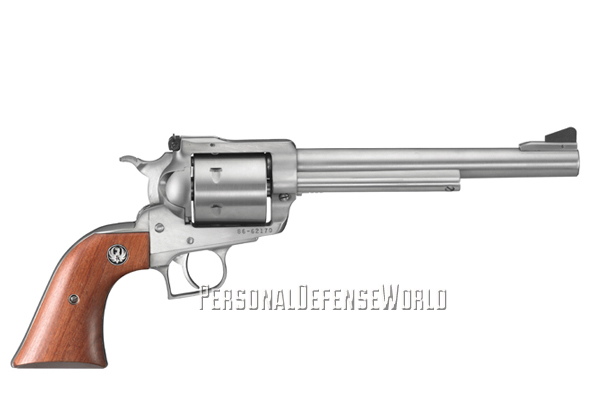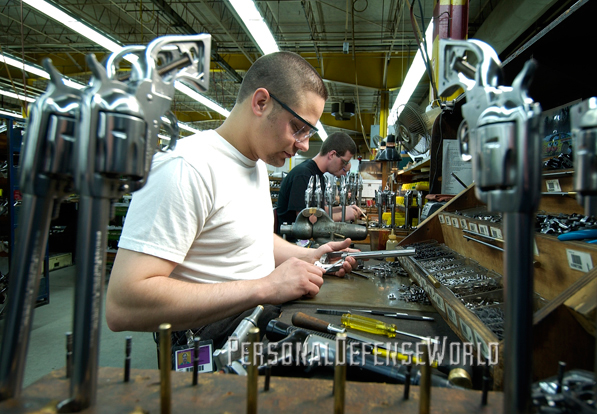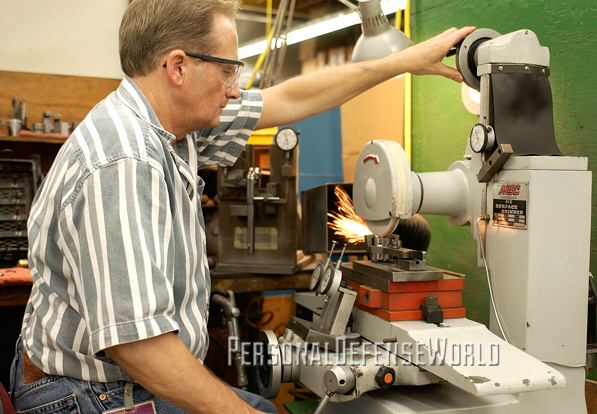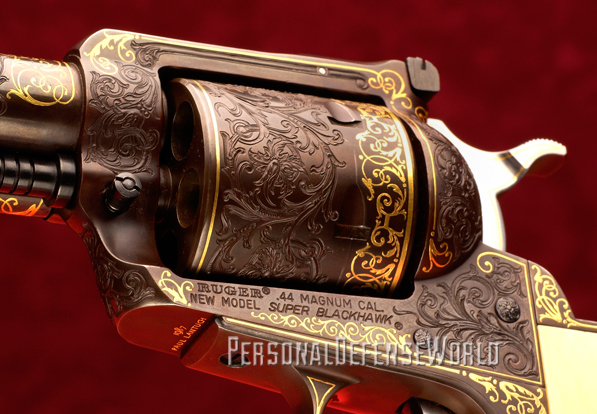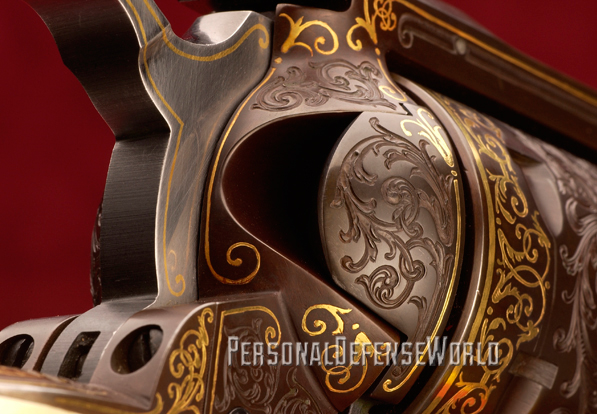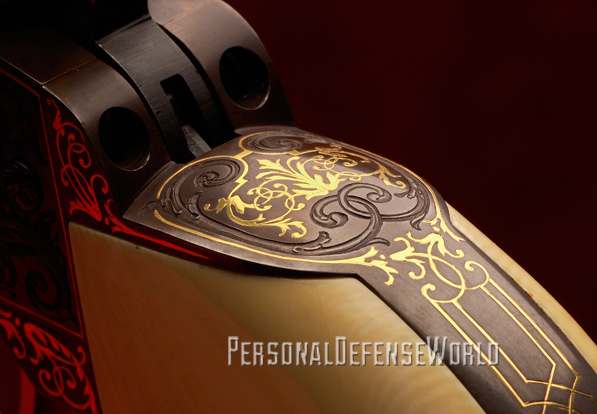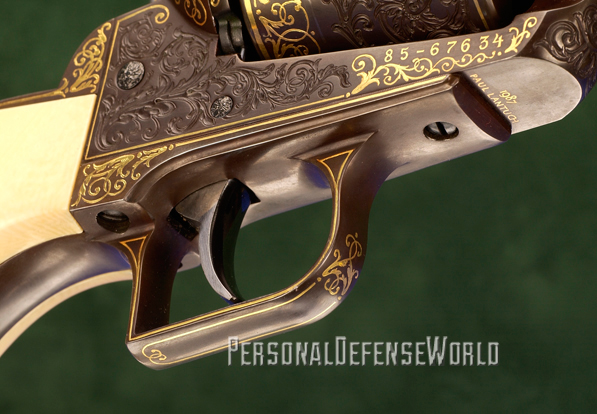According to what has been documented over the years, word has it that an employee from Sturm, Ruger & Company found a spent .44 Mag case in a scrapyard in Connecticut, leading Bill Ruger to believe competitor Smith & Wesson was up to something in the way of a big-bore handgun. With his foresight, Ruger was then able to field a larger, single-action handgun to handle this new cartridge, surprising Smith & Wesson by introducing it to the shooting public almost at the same time as S&W’s popular Model 29.
When it came to single-action handguns, Bill Ruger was ahead of his time.
As a kid, I’m sure you all remember the famous Western movies and shows on television. Naturally, everyone of shooting age cried for a single-action gun to fill their fantasies of participating in quick-draw competitions, which seemed to be sprouting up everywhere, especially in California. Colt had simply miscal-culated the industry, having discontinued its Single Action Army before World War II. So, being at the right time and place with a substitute, a new company emerged around 1953. Called Sturm, Ruger & Company, one of the first guns out of the gate was a trim revolver called the Ruger Single-Six, chambered for the equally popular and inexpensive .22 LR cartridge. Needless to say, demand outstripped the supply this new company could produce in Southport, Connecticut, which then led to the development of a centerfire gun called the Ruger Blackhawk.
Advertisement — Continue Reading Below
Blackhawk Takes Flight
The larger Ruger Blackhawk was one hot item and from its introduction to 1993, over 1.1 million guns were sold! In an effort to please all, Ruger chambered the gun in the .38 Special/.357 Mag, .41 Mag, .44 Mag, .45 Colt, .45 ACP, .30 Carbine, plus a few models complete with an interchangeable cylinder to use the 9mm in the .357 Mag and the .45 ACP with the .45 Colt guns. Barrel lengths measured between 4.63 and 7.5 inches, depending on the gun and chambering, and for materials, each Blackhawk was made from carbon steel with an anodized aluminum grip frame and ejector rod housing on the original blued models.
Bill Ruger always had that uncanny knack for bringing out the right gun at the right time, and the Ruger Super Blackhawk was no exception. With his Blackhawk well on the way to fame and fortune for the company, Ruger, in his ultimate wisdom, now turned his attention to designing a gun especially for the stout .44 Mag cartridge that could compete or even overshadow the likes of the celebrated S&W Model 29. I purchase mine around 1972, and with a serial number starting in the 80-41XXX series, all these years of testing handloads, full-house factory ammunition, shooting just for fun and plinking with lesser .44 Special loads have failed to materialize any defects in timing, looseness or downgrading in the accuracy department. From the get-go, this gun was made for a lifetime of shooting pleasure.
According to my research material, four major design changes reflect the difference between the initial Blackhawk single-action guns and the newer Super Blackhawk. To start, the hammer spur has been widened almost to target status and serrated. Appearance wise, the non-fluted cylinder jumps out at you; for strength and safety, you simply can’t build enough around each .44 Mag cartridge, and this surely fills the bill. I always like the Dragoon-style triggerguard on some of the early custom rifles, and Ruger incorporated it into the Super Blackhawk with some extra room for winter gloves. Finally, and the most obvious to some dyed-in-the-wool Blackhawk fans, is the integral sight rib that surrounds and protects the fully adjustable rear sights. Of course, that high-gloss polish and bluing that set the gun apart from the rest of the Blackhawk tribe, something that is missing from production guns today and for collectors, apparently started around serial number 4XXX.
Advertisement — Continue Reading Below
Collections
With regard to collectors, there are literally dozens of variations connected with the Super Blackhawk. In the very beginning, Ruger was trying to make a statement with the gun, and each was sold and encased in a cloth-lined, mahogany case. While it was nothing fancy, the gun was settled into an outline of the revolver with a label on the inside of the top lid with its name and maker printed on it.
Other variations would include a slightly longer (by 0.19 inches) grip frame that were on 300 to 500 early revolvers and was usually found in the serial range of #196 to #3111. Some barrels were marked with a trademark; others were not. Almost a decade later, the factory that was making those wood cases burned down (saving the customer only $4 in the final purchase), and from that point on, the variations of cardboard boxes the Supers were packaged in are worthy of collector status alone. There have been several variations in barrel lengths, with surprisingly enough that a few guns were shipped out with 10-inch barrels. Other records show a run of 6.5-inch barrels (about 2,000 guns), but they were never advertised in ads or Ruger catalogs. Finally, within a brief time period, some of the guns were shipped with a brass frame, perhaps in an effort to make it look like a gun that survived the Civil War!
Interesting to note is that the Super Blackhawk was one of the first new products to be manufactured at the Lacey Place location in Southport, Connecticut. Bill Ruger was more than pleased at his new $250,000 building, having it custom-built to his specifications just for the production of firearms, and with double the floor space, he was eager to compete with the major players out there along the Connecticut valley. We all know of the famed writer/hunter Elmer Keith, and Bill was great friends with him. So much in fact, that Ruger sent a prototype Super Blackhawk to Elmer for his opinion and feedback on this new gun, which he got back with much approval.
Advertisement — Continue Reading Below
In his book Ruger and His Guns, author R.L. Wilson has collected some of the highlights of the return letter from Keith to Bill Ruger, so allow me to quote an excerpt from his well-illustrated book. From Elmer Keith: “The ‘Dragoon’ Ruger arrived. My hat is off to you. This is just about what I have wanted and worked for 40 years now in a single-action and is by far the finest single-action sixgun ever produced to my way of thinking.” He goes on to say, “it’s the culmination of a lifetime of dreams for me” and tells Bill how he tried to get Colt to bring out such a gun with no results, stating Colt “did not have the gray matter of one Bill Ruger…”
Gun Details
The Super Blackhawk is still by far a viable revolver in today’s high-tech world. In 1973, for example, this gun
went through another evolutionary step in its history when Ruger announced the newly redesigned gun from the
older three-screw design to a “New Model” gun, as opposed to the now “Old Model” Super Blackhawk. With all the safety problems going around at the time, Ruger took it upon himself to feature his single-action guns with a new “two-pin” design with a revised transfer bar that allows you to carry six rounds in the cylinder with an additional touch of safety thrown in. The cylinder now could be released by simply opening the loading gate rather than placing the hammer on half-cock, and to this day, Ruger still offers this conversion as a goodwill gesture at no charge to the customer.
Bringing the Super Blackhawk to the present day, one look inside the new Ruger catalog shows this gun is not your father’s Oldsmobile. In fact, recent models fill over four full pages with 10 different models of the Super Blackhawk. For example, new buyers can choose between carbon and stainless steel in four of the “New Model” Super Blackhawks. For the traditionalist, the Super is now available in a conventional, non-fluted version with either a 4.62- or 5.5-inch barrel and with a blued or stainless finish. The pride of the fleet is of course the Super Blackhawk with a non-fluted cylinder, Dragoon-style triggerguard and all of the features as introduced in 1959 in both finishes, but with a 7.5- and 10.5-inch-barreled target model. Moving on, there is the Super Blackhawk “Hunter,” with a barrel rib that extends out to the front sight for mounting a scope within those famous Ruger supplied rings. Finally, the Super Blackhawk “Bisley Hunter” combines all of the features of the aforementioned models but has that novel Bisley appearance.
Advertisement — Continue Reading Below
In the hand, it’s a heavy gun and tames the .44 Mag cartridge when out shooting. The traditional 7.5-inch-barreled Super has an empty weight of 48 ounces without ammunition. The barrel supports the ejector rod housing, and due to numerous requests I’m sure, the roll marking stating you should read the manual before using the gun is happily stamped on the bottom part of
the barrel where it belongs—not on the sides, where it seemed to destroy the aesthetics of the gun for years.
The rear sight is fully adjustable for windage and elevation by screws on both top and bottom of the rear assembly. There is no white outline, and the sight is finished in a satin blue, which helps to guard against the glare of the sun. The rear sight is surrounded by metal on each side for protection while adding to the natural appearance of the gun. Up front, there is a rather large ramped sight perfect for shooting, as it fills the rear notch for fast target acquisitions.
The massive, 1.73-inch cylinder loads by simply opening the loading gate, filling the cylinder and closing the gate again.
To unload the spent cartridges, open the gate, rotate the cylinder and push out the empty cases with the ejector rod.
To remove the cylinder for maintenance, open the gate, pull forward on the base pin towards the muzzle, and roll the cylinder out of the frame.
Advertisement — Continue Reading Below
The hammer spur is not quite as wide as my older Super Blackhawk’s, and it’s not blued at the serrations, but it is
wide enough to be trouble-free no matter the outside conditions. The trigger pull is just a bit over 4 pounds with just a hint
of travel before the sear engages. My older gun’s trigger pull weight is less simply because of some professional tuning, not to mention its age. The overall quality of the gun is excellent, with all the flats polished true and finished with a flawless coat of high-quality bluing. While the finish is not as glossy as my older gun’s, nevertheless, this gun still rates as a premium gun in the big-bore category in both fit and finish. The grips are now made from laminated hardwood for wear; walnut was used in past years.
Six on Target
At the range, just for fun or educating someone, it’s bad form to use high-powered .44 Mag loads. The ammunition is too powerful for a nimrod, and it’s a good way to keep folks away from the shooting sports by starting them off on the wrong foot with full-house ammunition. Shooting .44 Specials in this gun is fun, and for loading I stick to using full-length .44 Mag cases, as they tend to fill out the cylinder more fully. This is especially true when using lead bullets, as you don’t get “ringing,” where lead is trapped on the cylinder forcing cone and causes quite a mess to clean up.
With factory ammunition, I have no preference, as the loads put out by all are top-flight when it comes to quality and accuracy. It’s nothing to get 2.5-inch groups at 25 yards, and my record books are full of such examples. When it comes to handloading, bullets from the major players have no faults, and for powers, tons of Alliant 2400 or Hodgdon H-110 fill the huge case with aplomb. Always check for overall length, and use magnum pistol primers for consistent ignition.
Advertisement — Continue Reading Below
The Ruger Super Blackhawk was certainly a gun worth waiting for. Shooting this gun proved it’s more than accurate enough for my enjoyment, and with its “plow handle” grip, the gun rolls back into your hand to absorb the heavy recoil any .44-caliber gun can generate. Like I said, the gun is made for a lifetime of shooting, and after four decades of shooting, I still enjoy mine. It’s just that kind of gun. For more information, visit ruger.com.
BUY NOW! AT www.personaldefenseworld.com/subscribe/handguns-buyers-guide/.

